LA Artist Wyatt Mills on Why All of Art History Inspires His Paintings—and Why He Sometimes Destroys Them
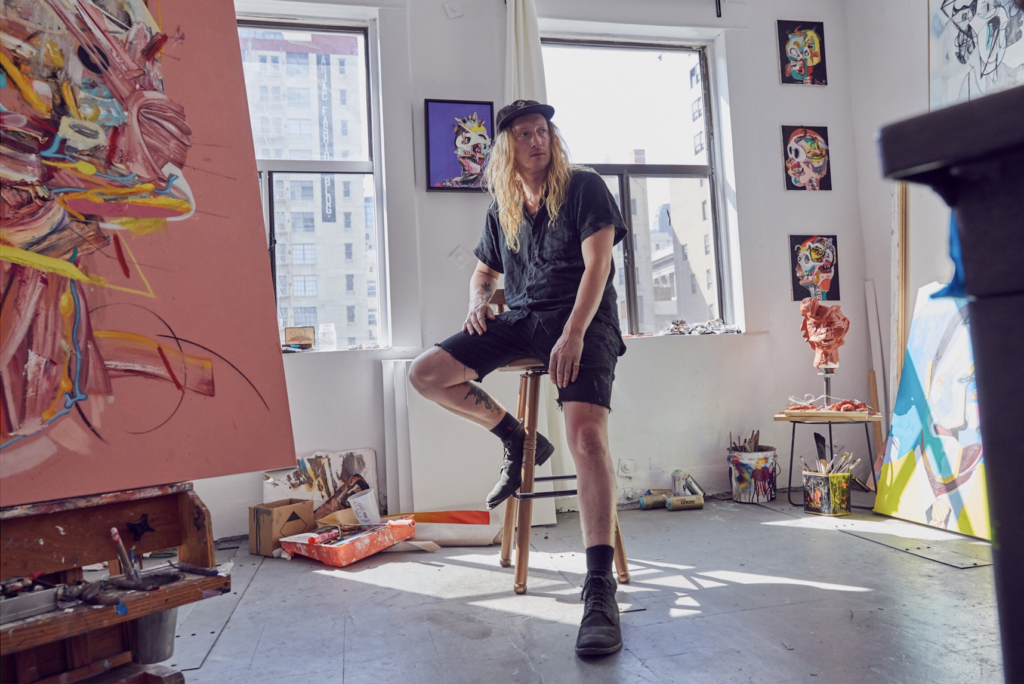

Artnet Gallery Network

It’s can be hard to talk about all the painterly references that inform the work of young Los Angeles-based artist Wyatt Mills because there are so many styles and allusions at play in any one given work. From Cubism and collage to Pop art and Neo-Expressionism, it can be hard to pull them all apart.
There are a dozen new paintings on view at his new exhibition at Mugello Gallery in LA, titled “Pareidolia,” yet each canvas seems to contain three or four in one. In fact, that may literally be the case. Mills often paints over previous works or cuts canvases apart and pastes them back together. Sometimes he mixes silkscreens and collaged materials from magazines into this compositional stew with the hope of constantly introducing elements of surprise.
“Pareidolia” is the phenomenon in which the human brain identifies patterns that aren’t really there, like picking a face out of naturally occurring shapes. Indeed, that particular analogy is helpful when thinking about Mills’s paintings, which often involve portraiture, albeit portraits that have been distorted beyond the point of recognition.
Mills spoke with artnet News about his influences, his distinct everything-but-the-kitchen-sink aesthetic, and why destroying one’s work is sometimes the best lesson.
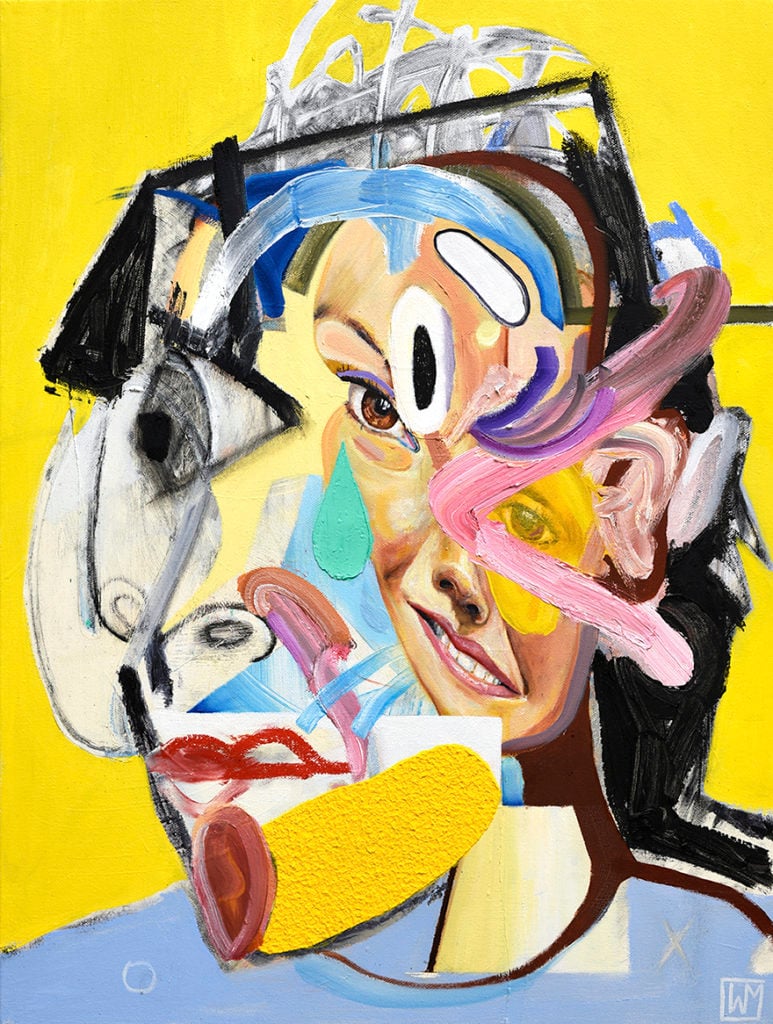
Wyatt Mills, Untitled (2018). Courtesy of Mugello Gallery.
Can you tell us a little bit about your background? When did you come to art?
I was born in New York and then moved to LA when I was about two. I was a pretty strange and outgoing child. My wardrobe consisted solely of superhero costumes and cow-print overalls. At a young age I became obsessed with Stephen King and I would write horror stories on my typewriter. I started to make my own little monster books, fully illustrated with three-sentence bios of each creature. Among them were “Cheetah Guy” and “Dr. Pepper Man,” both of whom were considered very dangerous. I still have some little picture books I made of my nightmares in second grade. Giant killer lobsters were a theme of mine at the time.
When I was around ten, a girl I had a crush on joined an after-school art class. I started going to that twice a week for what ended up being about six years. I went from drawing Pokémon cards to being obsessed with Claude Monet and trying to recreate his paintings of huts and water lilies. After that and four subsequent years of doodling in high school, I decided to pursue fine arts at the School of Visual Arts in New York. It was during that time that my desire to be an artist became very sincere.
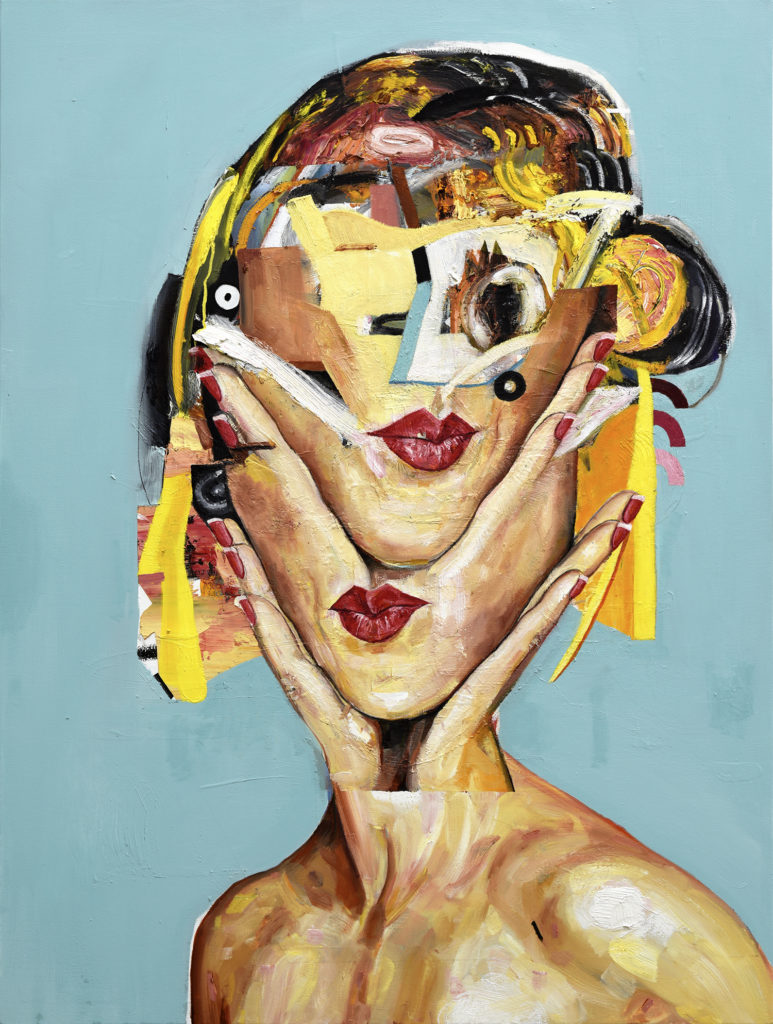
Wyatt Mills, Flirt (2018).Courtesy of the artist and Mugello Gallery.
Who were the artists that inspired you the most when you were growing up and who are you interested in now?
When I was 18, my visual diet pretty much consisted of MAD magazine, The Twilight Zone, and campy horror films. I loved artists like Ralph Steadman for his wild use of lines, and Lucien Freud’s texture and ephemeral application of paint. I then slowly discovered artists like Otto Dix, Max Ernst, and George Grosz, which lead to my obsession with German Expressionism and films like Dr. Caligari.
Now I get ideas from anywhere: daily interactions, a picture of a beat-down laundromat in my neighborhood, a strange place in the internet. I like people watching. I also have endless reference banks of photos I’ve taken of various friends and places—those can be inspiring to revisit. I’m always blown away by heavy-hitting painters like Guston, Bacon, and de Kooning, but I also really admire painters with a softer touch, like Marlene Dumas.
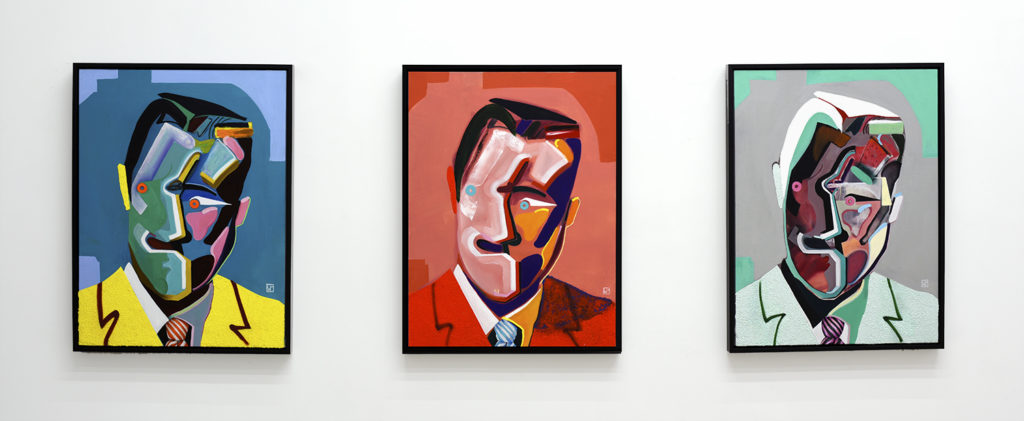
Wyatt Mills, Guy With A Grin (Triptych) (2018). Courtesy of Mugello Gallery.
When did you start introducing mixed media elements into your work—the sediments, magazine snippets, silkscreens, for example?
Once I was working on a terrible painting. It was really bad and I had spent a lot of time on it. I finally got so frustrated one night that I turned off the lights, tossed it on the ground, and started Frisbee-ing paint at it. I poured random oil mediums over it, stabbed it with a palette knife a few times, then went to a bar.
The next day, when I came back, there was this really interesting thing on the ground. It even had these wrinkly, skin-like textures from the air conditioner blowing on the drying liquids. Ever since then I’ve tried to add an element of surprise to my process, whether it’s using new materials, substituting brushes with fingernails or other random objects, incorporating various mediums like silk-screening, or even cutting apart two paintings and conjoining them.
I think the best way for new artists to develop themselves is to keep making and destroying their own art.
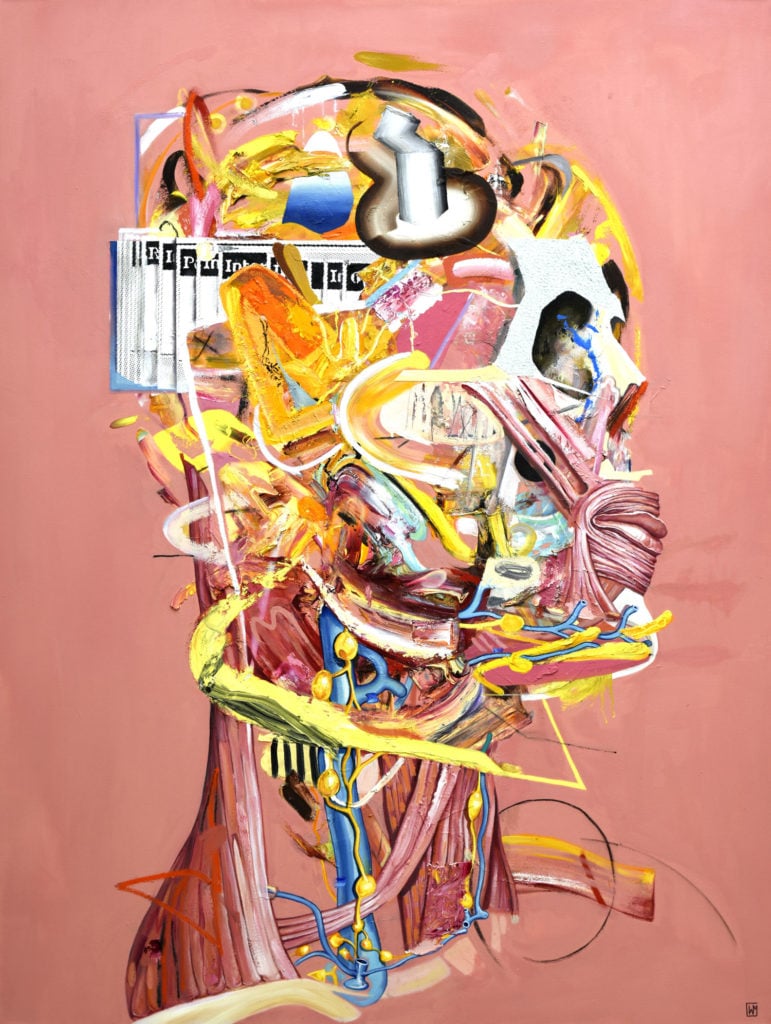
Wyatt Mills, Internal Dialog (2018). Courtesy of the artist and Mugello Gallery.
What about color? Your paintings tend to have a pretty vibrant palette.
I’ve had a dog in my studio try to eat a tube of paint and that is what decided the next color. Other times I think a careful and deliberate color placement can make a significant difference in the way the viewers eyes meet the picture. I try to think in terms of scenarios like, what if all the colors and lines got vacuumed out of Rembrandt, Basquiat, and Joseph Albers paintings, and then you opened the vacuum bag and had to put everything back together?
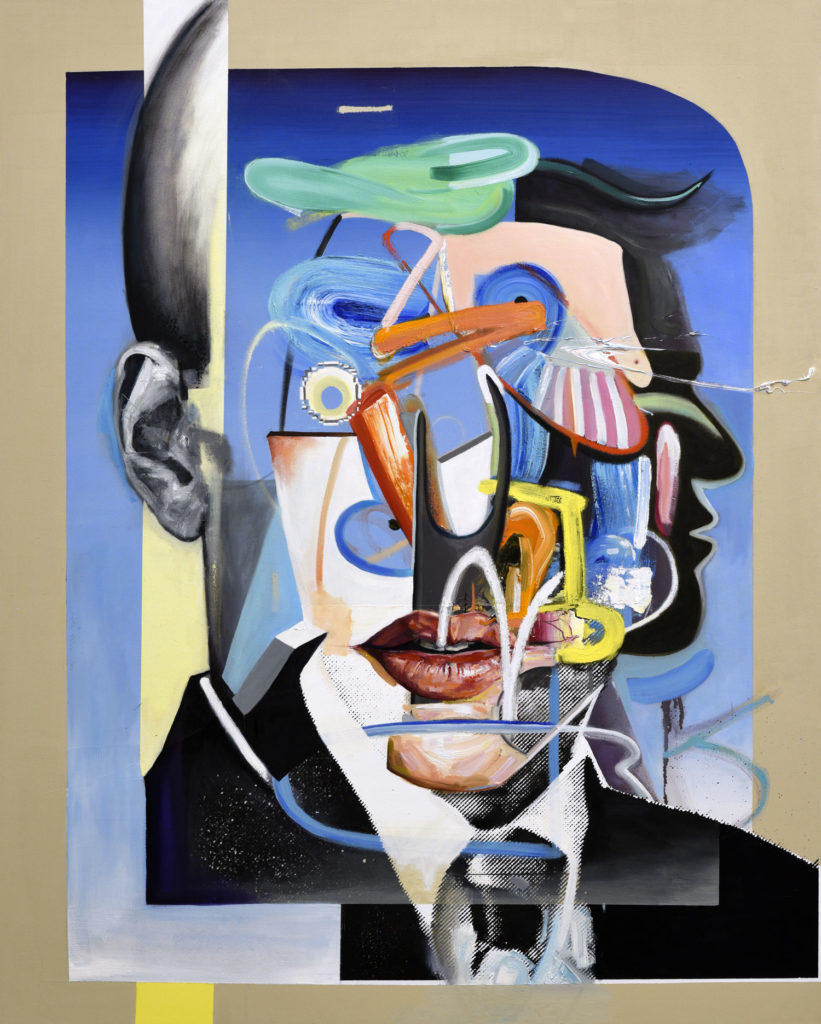
Wyatt Mills, Waterfall (2018). Courtesy of the artist and Mugello Gallery.
You work almost exclusively in portraiture, even if much of it is more abstract than figurative. What is it about this domain that interests you?
Portraiture is a great sandbox for me to play in. By using the structure of a portrait, the viewer is imminently doomed to see an individual or person. This enables me to experiment with the capabilities that paint has in terms of portraying a perception—playing with the moods of color, texture, and seeded moments of definition. I find myself taking little bits and pieces of different people or photographs and piling them on top of one another until a new persona forms and grows itself. The previous layers flicker through the final image like a backlight, and in this way for me it resembles the memories and past versions of ourselves that we carry on our shoulders in the present.
Wyatt Mills’s “Pareidolia” is on view at Mugello Gallery on September 15-October 26, 2018.